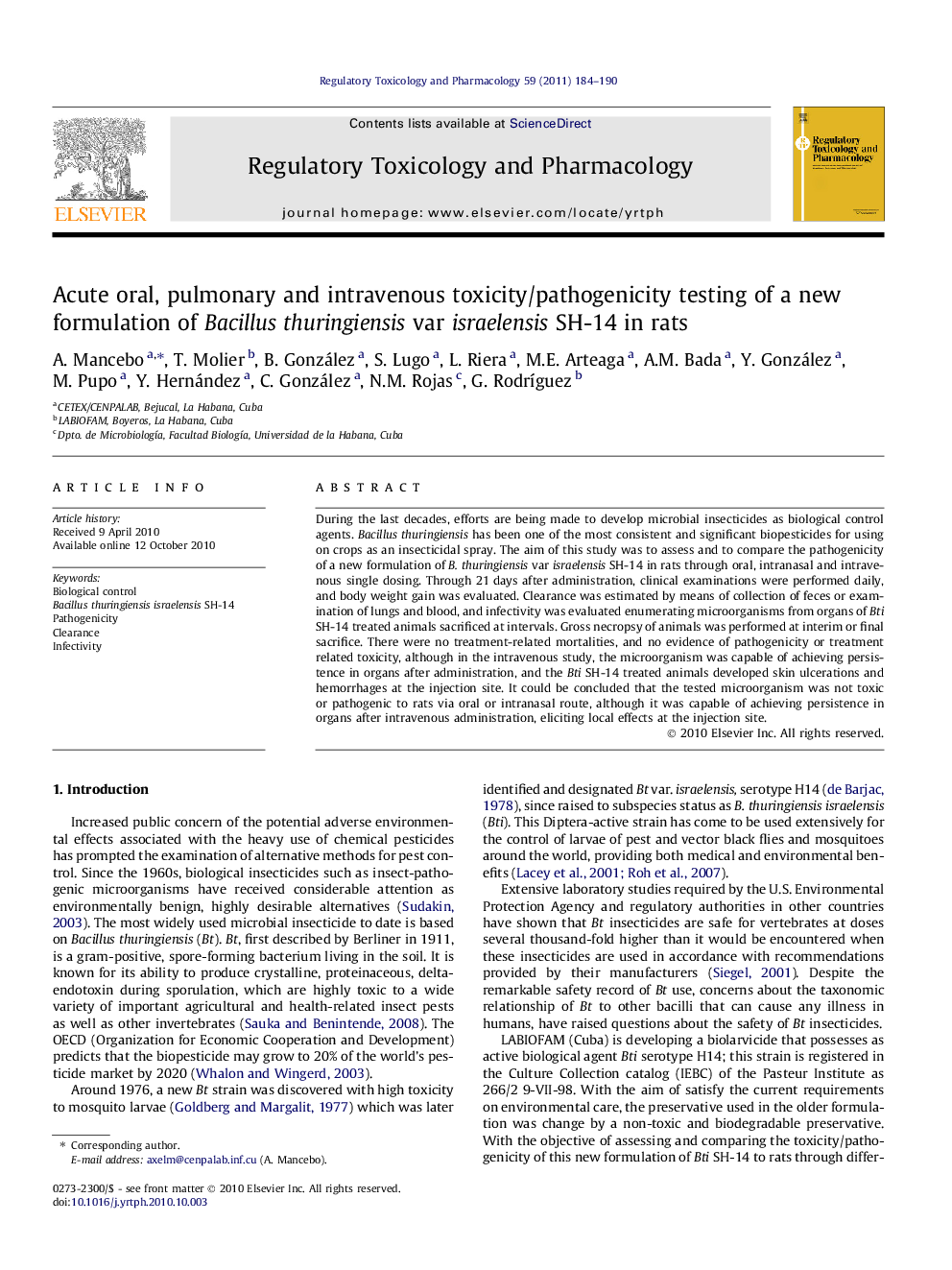| Article ID | Journal | Published Year | Pages | File Type |
|---|---|---|---|---|
| 5857636 | Regulatory Toxicology and Pharmacology | 2011 | 7 Pages |
During the last decades, efforts are being made to develop microbial insecticides as biological control agents. Bacillus thuringiensis has been one of the most consistent and significant biopesticides for using on crops as an insecticidal spray. The aim of this study was to assess and to compare the pathogenicity of a new formulation of B. thuringiensis var israelensis SH-14 in rats through oral, intranasal and intravenous single dosing. Through 21Â days after administration, clinical examinations were performed daily, and body weight gain was evaluated. Clearance was estimated by means of collection of feces or examination of lungs and blood, and infectivity was evaluated enumerating microorganisms from organs of Bti SH-14 treated animals sacrificed at intervals. Gross necropsy of animals was performed at interim or final sacrifice. There were no treatment-related mortalities, and no evidence of pathogenicity or treatment related toxicity, although in the intravenous study, the microorganism was capable of achieving persistence in organs after administration, and the Bti SH-14 treated animals developed skin ulcerations and hemorrhages at the injection site. It could be concluded that the tested microorganism was not toxic or pathogenic to rats via oral or intranasal route, although it was capable of achieving persistence in organs after intravenous administration, eliciting local effects at the injection site.
